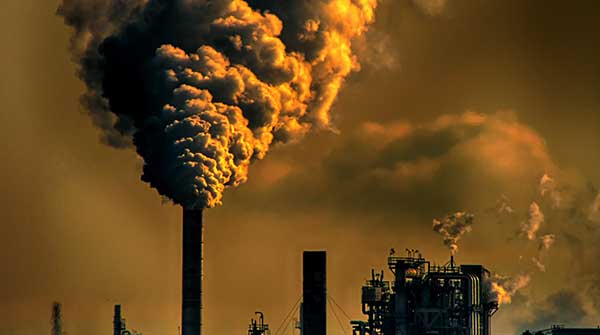Canada’s plan to implement an emissions cap system faces opposition from Saskatchewan, Alberta and Newfoundland
 Last Thursday at the 28th United Nations Climate Change Conference (COP28) in Dubai, Canada made a significant announcement regarding its plan to implement a cap-and-trade system to curb greenhouse gas emissions within the nation’s oil and gas industry.
Last Thursday at the 28th United Nations Climate Change Conference (COP28) in Dubai, Canada made a significant announcement regarding its plan to implement a cap-and-trade system to curb greenhouse gas emissions within the nation’s oil and gas industry.
However, it wasn’t long before the announcement drew vehement opposition from several Canadian provinces, which voiced their concerns and objections to the proposed emissions cap.
Under the new framework, Canada outlined its intention to set emissions allowances for the oil and gas industry between 35 percent and 38 percent below 2019 levels, beginning in 2030. These limits would then be progressively tightened with the ultimate goal of achieving net-zero emissions within the sector by 2050.
The cap-and-trade system’s core principle is that facilities operating within the sector must either reduce their emissions or purchase emissions allowances from other facilities that have successfully reduced theirs. In cases where emissions exceed the established cap, producers would also have the option to offset their emissions by buying carbon credits or contributing to a fund that promotes decarbonization initiatives.
Significantly, the emissions cap would primarily apply to upstream emissions stemming from oil and gas development activities within Canada. The framework encompasses sub-sectors like liquefied natural gas producers, conventional and offshore oil producers, oil sands producers, and natural gas processors but excludes emissions from refineries, which fall under separate clean fuel regulations.
While the federal government’s proposal may have sought to strike a balance between environmental objectives and economic considerations, it faced swift and strong opposition from several Canadian provinces.
One of the most vocal critics was Saskatchewan Premier Scott Moe, who asserted provincial jurisdiction over these matters. Moe vehemently opposed the emissions cap, arguing that it would impose additional regulatory burdens and red tape on the already struggling oil and gas sector.
In a statement released to media, Moe said he remains opposed to an oil and gas emissions cap and his government “will protect our constitutional right to build our economy in accordance with the priorities of Saskatchewan families and businesses.”
Alberta, another province heavily reliant on the energy industry, echoed these concerns, describing the emissions cap as “punitive” and an “intentional attack” on the province’s economy. Premier Danielle Smith, who was attending COP28 in Dubai, argued that Alberta, as the owner of its resources, has exclusive jurisdiction to develop and manage them. She expressed concern that the proposed measures could jeopardize substantial investments in the province’s economy.
“Justin Trudeau and his eco-extremist Minister of the Environment and Climate Change, Steven Guilbeault, are risking hundreds of billions of investments in Alberta’s and Canada’s economy,” she said.
Even the provincial government in St. John’s weighed in, emphasizing the need for detailed analysis and further discussion with the federal government before any concrete steps are taken.
The contentious nature of the emissions cap proposal became even more evident when the Canadian Association of Petroleum Producers (CAPP) entered the fray. CAPP expressed fears that adding emissions cap regulations to the existing carbon pricing and methane policies could introduce unnecessary complexity, potentially hindering investments in clean energy projects. They cautioned that the unintended consequences of this framework might include significant production cutbacks and higher energy costs for Canadians.
Yet environmental groups did not appear fully satisfied with the proposals. Federal NDP environment critic Laurel Collins told the media that the framework misses the mark and panders to the oil and gas sector’s CEOs.
Rick Smith, president of the Canadian Climate Institute, described the framework as a “sensible approach” yet criticized the timeline. “There’s no need to push off implementation to 2026 or later,” he said.
Caroline Brouillette, executive director of Climate Action Network Canada, welcomed the framework and called it an example of backing “diplomacy with domestic action.”
“Now we must double down to ensure that draft regulations are tabled by February and that the oil and gas industry finally does its fair share of the national climate effort,” she said.
The Pembina Institute also welcomed the cap, describing it as “responsible and realistic.”
“The regulatory framework released today is an important step toward meaningful reductions in emissions from the oil and gas sector,” said the institute’s Janetta McKenzie.
These conflicting perspectives highlight the deep divides and complex challenges in shaping Canada’s emissions reduction policies, demonstrating that achieving consensus on environmental and economic issues remains formidable.
Toronto-based Rashid Husain Syed is a highly-regarded analyst specializing in energy and politics, with a particular emphasis on the Middle East. Besides his contributions to both local and international newspapers, Rashid frequently lends his expertise as a speaker at global conferences. His insights on global energy matters have been sought after by organizations such as the Department of Energy in Washington and the International Energy Agency in Paris.
For interview requests, click here.
The opinions expressed by our columnists and contributors are theirs alone and do not inherently or expressly reflect the views of our publication.
© Troy Media
Troy Media is an editorial content provider to media outlets and its own hosted community news outlets across Canada.



